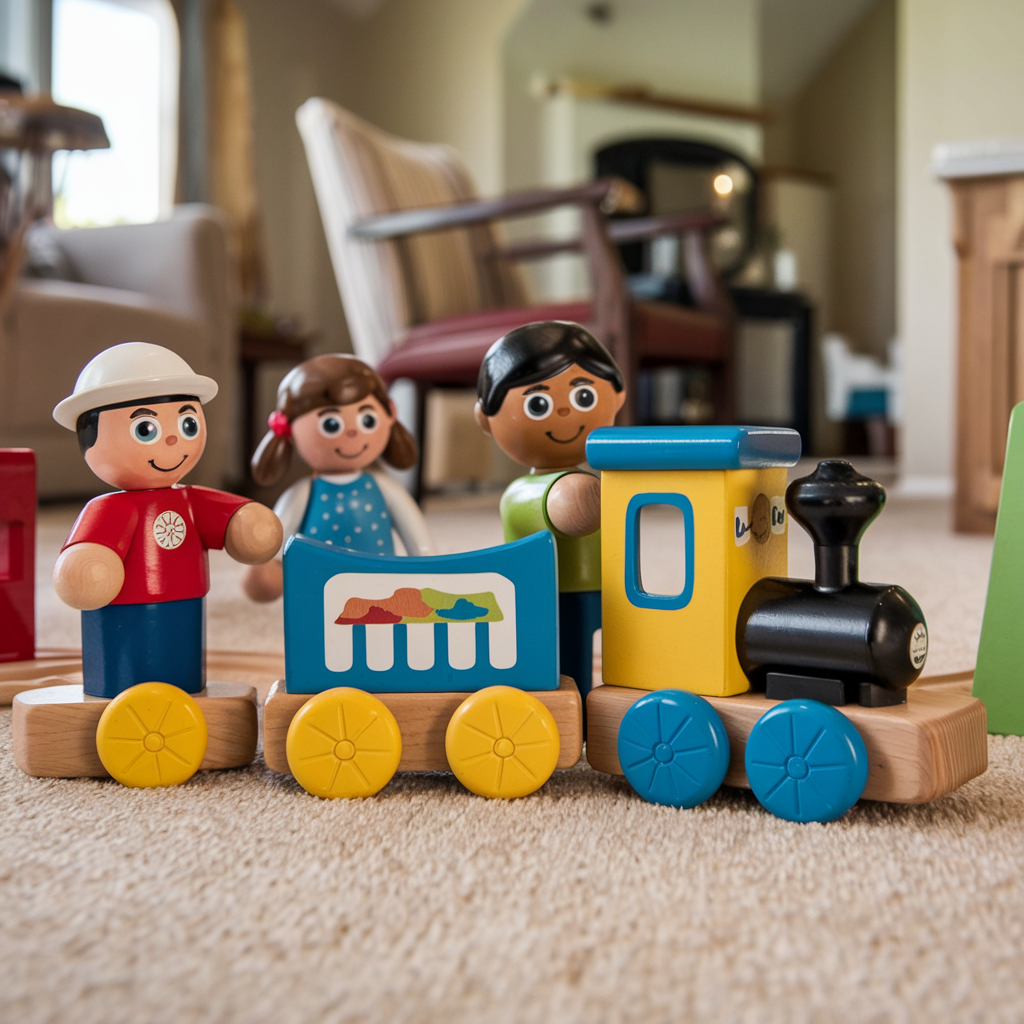When it comes to selecting wooden toys for children, many parents wonder whether to opt for imported or domestic products. This decision involves several factors, such as quality, safety, price, and sustainability. In this article, we’ll explore the key differences between imported and domestic, helping you make the best choice for your child and your family.

1. Quality and Durability
The quality of can vary significantly depending on their origin, whether imported or domestic. In many cases, wooden toys imported from countries known for their toy-making excellence, such as Germany or Sweden, offer top-notch quality. These nations have a long tradition of producing durable, well-crafted wooden toys, with meticulous attention to detail.
On the other hand, many domestic manufacturers also produce high-quality wooden toys. For example, some toys made in the United States or other local markets use locally sourced wood and artisanal techniques, resulting in unique and equally durable products.
Tip:
- Always check reviews and quality certifications when purchasing both domestic and imported toys.
2. Safety
Safety is a top priority when selecting any type of toy. Wooden toys imported from developed countries typically adhere to strict safety standards, such as European or American regulations. These products are often tested to ensure they are safe for children, free from small parts that could be swallowed or toxic chemicals in the paints used.
In the U.S., the Consumer Product Safety Commission (CPSC) regulates and certifies the safety of domestic toys. Therefore, when opting for domestic with a CPSC certification, you can be confident the product has passed rigorous safety tests.
Suggestion:
- Ensure that both imported and domestic comply with the safety standards of the country you’re purchasing them from.
Read more: Buying Wooden Toys: How to Evaluate the Safety of wooden toys
3. Price
Cost is a key factor in the decision between imported and domestic. Imported toys often come with added expenses such as transportation and import taxes, which can make them more expensive. Renowned international brands may require a higher investment but frequently deliver high-quality products.
On the other hand, domestic are usually more affordable since there are no import costs. Buying from local manufacturers can also support the domestic economy and small businesses.
Save Smart:
- If price is a deciding factor, domestic can be a more economical and sustainable option.
4. Sustainability
Sustainability is crucial when choosing wooden toys, whether imported or domestic. Many imported wooden toys manufacturers follow eco-friendly practices, using wood from certified forests and sustainable materials. However, the environmental impact of transporting these toys can be significant.
Domestic wooden toys, especially those made from reclaimed or certified wood using artisanal processes, often have a lower carbon footprint. Additionally, by purchasing from local companies that value sustainability, you contribute to environmental preservation.
Green Tip:
- Look for domestic wooden toys made from certified and sustainably sourced wood to ensure an environmentally conscious choice.
5. Availability and Variety
When considering imported wooden toys, variety can be an advantage. Toys from European or Asian countries often feature unique and innovative designs that may not be available in local markets.
However, domestic wooden toys are becoming increasingly diverse. The local toy industry is growing, and today you can find a wide range of options, from educational toys to more creative and interactive items, catering to different age groups and preferences.
Varied Selection:
- Consider what best fits your child’s needs and preferences, whether an imported toy with exclusive designs or a domestic product with cultural significance.
Conclusion
When choosing between imported and domestic, it’s important to weigh the pros and cons of each option. If you value high-quality craftsmanship and are willing to invest, imported toys may be the ideal choice. However, if you want to support the local economy, seek a more affordable option, or prioritize sustainability, domestic are an excellent alternative.
Ultimately, the most important factors are ensuring the toy is safe, durable, and meets the needs of your child. Whether you choose imported or domestic toys, both can provide fun and educational experiences in a safe and responsible way.
